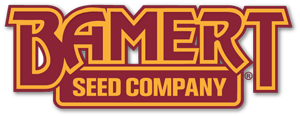Blog

Custom Seed Mix: the Best Choice for Reclamation Projects | Bamert
Custom Seed Mix: the Best Choice for Reclamation Projects In land reclamation, particularly within the oil & gas and solar farm industries, selecting the right seed mix is crucial for long-term success. Whether you’re managing large-scale projects or more focused

Native Seed Mixes for Low-Impact Solar Farms | Bamert Seed Company
Why Native Seed Mixes Are Key for Low-Impact Solar Farms Optimizing Low-Impact Solar Farms with Native Seed Mixes As the demand for renewable energy continues to rise, solar farms are becoming a bigger part of our shift toward a greener

Planting in Dry Climates: Top Drought-Tolerant Seeds
Essential Seeds for Arid Environments In the challenging environment of dry climates, choosing the right seeds for planting can make all the difference. Whether you’re a project manager overseeing a large-scale reclamation project or an agriculture professional aiming to enhance

Custom Seed Blends for Reclamation Projects | Bamert Seed
Custom Seed Blends: Essential for Effective Reclamation Projects When managing a large-scale reclamation project, particularly in the oil and gas or solar farm sectors, the choice of seed blend can significantly impact both your budget and your project’s overall success.

The Role of Phosphorus & Potassium in Native Prairie Restoration
Inorganic Fertilizers and the Role of Phosphorus and Potassium in Native Prairie Restoration At Bamert Seed, we take immense pride in cultivating a love of the land that spans generations. We love to see the same thing happen to

The Best Texas Wildflower Seeds for Pollinator Habitats
International Wildflower Week takes place June 17th through June 23rd. But, one week of recognition hardly seems like enough for such an impactful species of plant. Wildflowers are a pillar of any ecosystem, and essential for creating pollinator habitats. Maybe
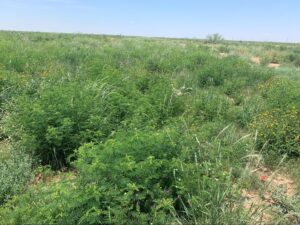
Controlling Weeds When Establishing Native Grasses
Controlling weeds is crucial during the initial stages of establishing native grasses. Weeds compete aggressively for resources and can significantly hinder the development of young native plants. Our team This post explores effective strategies for managing weeds to ensure the
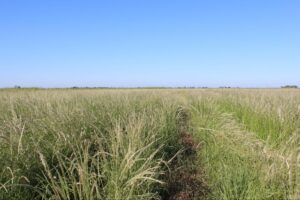
Is Irrigation Necessary When Establishing Native Grasses?
Many of our customers have begun planting native grasses, and one of the most common questions we get this time of year is “How much do I need to irrigate?”. Because this question is so common and so important, we
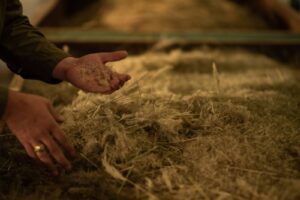
What is Pure Live Seed (PLS) for Reclamation Projects?
While reclamation projects have no set window or time frame, they are more frequent in the spring. A successful planting and establishment is necessary to move on to your next project. This makes buying and planting high-quality seeds a crucial

The Southeast Texas Native Seed Mix
Southeast Texas is an area with a unique ecological challenge. It’s an area that can be plagued by periods of significant wet and dry, making it difficult to identify the steps to take to achieve ecological balance. However, it’s just

Grow with Us: Take Our Survey & Get Free Shipping
We want to make sure that the content we offer you online through our blog, emails, social, and more, fits your needs. With that in mind, our team has created a short survey. It should not take more than five

Winter Planning for Spring Reclamation & Conservation Projects
Mother Nature always knows best. As much as possible, we try to follow her lead and learn from her example. One of her best lessons is the importance of rest, both for the land and for us. While a season
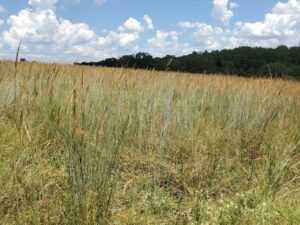
Reclamation Project Planning with Seed-Spec
Quickly and Easily Identify Site-Specific Native Seed Blends Reclamation projects are complex scenarios. Beyond managing crews, deadlines, and budgets, there is the importance of identifying the right species for a location. Many regulations around reclamation or revegetation require that an

Cover Crops and Nurse Crops for Reclamation and Revegetation
One of the many lessons learned from Mother Nature is the importance of seasons. Her natural cycles of germination, growth and fruition, harvest, and rest (or dormancy) prove to be as close to perfect as possible in cultivating healthy stands
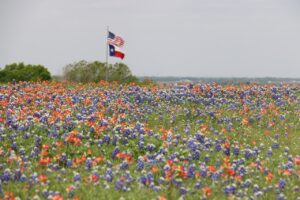
Planting Native Wildflowers: Why Fall is the Best Season
While Summer heat hasn’t shown any signs of letting up for many of us in the Southwest regions of the U.S., we know that colorful leaves and crisp air are just around the corner. But today, we want to talk

Create Wildlife Habitat Using Native Grasses and Forbs
It’s difficult to imagine a more peaceful mental image than looking out from your back porch watching prairie grasses swaying gently in the breeze while local wildlife put on a show: birds chirping, deer grazing in the distance, bees buzzing

Combatting Drought with Native Grasses
These days, it feels like we’re always hearing about droughts somewhere: California, Utah, the Great Plains – regions all across the U.S. have issues with the loss of water and rivers and lakes down. Even with recent rainfall this year,

Restoring Native Prairies & Grasslands
Hundreds of years ago, much of the central United States was covered in prairie and grassland. Bison and deer roamed the plains, while smaller mammals and birds benefited from the covering and forage provided by native grasses. We might be

The Benefits of Native Species for Grazing Livestock
Native species are a critical component of land management and conservation practices. In areas where grazing livestock is prevalent, the use of native grasses has been shown to provide numerous benefits. From providing ground cover to offering nutritional benefits for

Warm Season Perennials: A Guide to Restoration
As we’ve transitioned from March to April, many of us are experiencing Spring in full force. While these warmer temperatures might be ideal for outdoor activities and evening cookouts, they’re also prime-time planting for warm-season perennials. Planting native perennials is

Do I Need to Fertilize?
By Rob Cook, Director of Business Development, Bamert Seed Many times our customers ask if they should fertilize, or ask us to give a fertilization recommendation based off of the species of grass in the blend they’re planting. Unfortunately there

The Life of a Bamert Seed
Bamert Seed Company’s dedication to providing the best has allowed us to offer over 400 species of high-quality native grasses, forbs, and legumes. The species and varieties we produce have been carefully selected to match the soil and climatic conditions

Understanding Soil Type: Optimizing Native Grass Growth
Establishing native plants requires you to use high-quality, pure seeds. But before you can put those seeds into the ground, you have to know all about your soil type. An in-depth knowledge of your soil type allows you to determine

A Guide to Seeding and Establishing Native Species
By Nicholas Demel It is difficult to overstate the many benefits that come from seeding and establishing native plant species. These species protect soil and prevent erosion, strengthen a local ecosystem by creating a natural habitat for wildlife and insects,

Don’t Waste Money by Going Cheap With Your Seed
By Rob Cook, Director of Business Development, Bamert Seed When undertaking a reclamation, right of way, or construction project, some of the biggest concerns during and after the construction are stopping and preventing erosion, restoring the hydrology of the site,
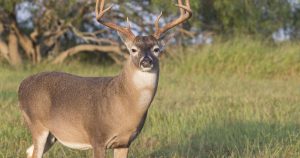
Best Food Sources and Habitats for Animals
Butterflies, bees, and birds are drawn to these native blends because they provide food for pollinators and have beautiful aesthetics. Texas Wildflower Blend Bird & Butterfly Blend Honey Bee Blend American Magic Wildflower Mix Deer enjoy these native blends. Many

Prescribed Burning
Prescribed burning is used on many native habit types to achieve specific resource management goals and objectives. The technique that we use for burning is classified as a “ring fire.” A ring fire consists of a backfire, a flank fire,
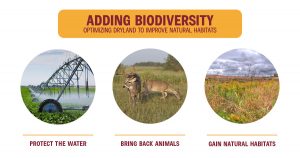
Biodiversity is Key!
Since the beginning of Bamert Seed Company in 1951, we have been rooted in the belief and knowledge that the market needs more diversity. In the early days of the native seed industry, blends usually consisted of a limited number

Bamert Seed Staff’s Favorite Native Plants
Texas Wildflower Blend Natalie Ingle If you ever meet Natalie, you’ll find her to be a very colorful, outgoing person, and truly a proud Texan! All of her favorite native seeds are found in our Texas Wildflower Blend. Natalie wants everyone

Seeds Are Life
When our customers are looking to grow specific native species that they request or our specialists recommend, many wonder what the seeds actually look like. Getting all the details, even knowing the appearance of the seed, is important before making

Cool Season Grass vs. Warm Season Grass
Cool-season grass, and warm-season grass. These are terms often used in the native grass industry. You may have heard them too, but sometimes they can be a little confusing. If you have ever wondered whether to plant cool-season grass or

5 Principles of Soil Health
Rainfall is one thing landowners cannot control. That’s the bad news. But, here’s the good news. The amount of rainfall is not the determining factor when it comes to soil health. Rather, it’s the rainfall retained that truly makes a

Will This Seed Grow Here? Seven Items to Consider in Seed Selection
You may find yourself thinking, “Will this variety grow well in my garden/field in ___________? (Fill in the blank with your location.)” Whether or not a certain variety or species will thrive in an intended area is a question we
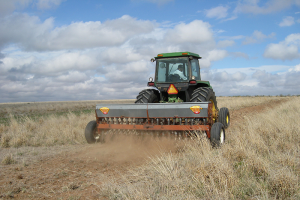
6 Steps to Successful Seeding
Successful seeding can be achieved, but as with any endeavor, it takes planning. There’s nothing more satisfying than achieving the results you’ve hoped for when you place seed in the ground. And when you have the six necessary components for

Monocultures — 3 Reasons to Steer Clear
While a monoculture might sound like the easiest way to address land management challenges, be wary of “silver bullet” solutions. A monoculture is the cultivation or growth of a single crop or organisms. In the case of grasses, they are

Tips for Reading a Seed Bag Tag
Whether you purchase a one-pound bag of grass seed at a chain store or a 50-pound custom blend from Bamert, your seed bag will include a seed tag. These tags are required by law to protect the consumer and provide

Engelmann Daisy: Species Spotlight
Engelmann Daisy is part of the “Big Four” of perennial forbs native to Texas. It will offer the same great benefits of the other desirable native species we’ve discussed in our series thus far. However, Engelmann Daisy—Latin name, Engelmannia pinnatifida—features

Leave the Leaves
This fall, put away the rake and forget those lawn bags. It’s time to leave the leaves and give your garden all the benefits that come from letting the leaves remain. We know it’s the norm to get the leaves picked

Maximilian Sunflower: Species Spotlight
Diversity is key to a healthy, thriving ecosystem. If you’re going to have to have a lot of variety, you might as well include a show stopper. Maximilian Sunflower shines as part of the “Big Four” perennial forbs with similar

For Beautiful Wildflowers in the Spring, Plant Them in the Fall
Even though the leaves are just beginning to fall, now is the time to begin dreaming of spring. Mother Nature needs time to get the beautiful, bright blooms of wildflowers just right. Wildflower beauty can abound on your property when
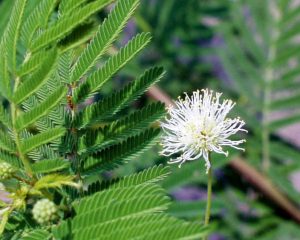
Illinois Bundleflower: Species Spotlight
If you’re looking to attract a wide range of wildlife from deer and turkey to quail and dove, Illinois Bundleflower is ready to go to work for you. Illinois Bundleflower—Latin name, Desmanthus illinoensis—is part of the “Big Four” perennial forbs.

Species Spotlight: Bush Sunflower
Within our land management circle, the term “Big Four” is commonly used to refer to the four grasses that are stalwarts of the true Tallgrass Prairie. The Big Four are both prized by stewards because of the benefits they lend

Species Spotlight: Sand Dropseed
We’ve been talking a lot about the “big four” grasses of the Tallgrass Prairie lately. While these are the all-stars of the ecosystem team, they certainly could not shine without other grasses whose roles allow them to take hold and
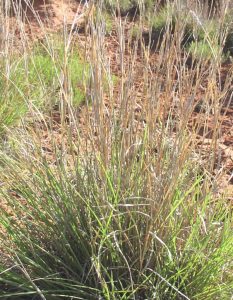
The Big Four: Little Bluestem
Reclamation projects rely on little bluestem because it grows easily and takes hold in a variety of soil types. Little Bluestem’s Latin name is Schizachyrium scoparium. It is a member of the “big four” grasses. Recognized as the state grass
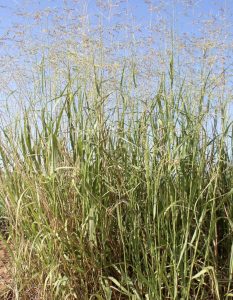
The Big Four: Switchgrass
We’re turning our conversation toward a member of the “big four” grasses of the true Tallgrass Prairie, Switchgrass — Latin name Panicum Virgatum. It is one of the most versatile members of the club. A native, warm-season perennial bunchgrass, it
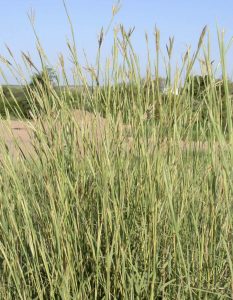
Big Bluestem: One of The Big Four Grasses
Big bluestem — a member of the “big four” grasses of the Tallgrass Prairie — is in demand by range managers because it is not seen as much in rangelands as it once was. When Big Bluestem—Latin name Andropogon gerardii—takes

The Big Four: Indiangrass
To the untrained eye, the grasses delicately dancing in the wind across the prairies of the heartland may appear all the same, or a mixture of too many to name. However, there are actually four dominant species in the true

Nurse Crops | Protecting Plants as They Establish in Reclamation Projects
Hello Nurse Crop Nurse crops have been used for years, but often are overlooked during the planning process of reclamation seeding. Perennial grasses and forbs are aided by nurse crops because they offer protection as the plants establish. A

Where’s My Grass?
There’s nothing more frustrating when checking on ground after planting native grass seed or Texas native plants than to have your gaze met with barren soil. The familiar question is, “Where’s my grass?” As reclamation specialists, Bamert doesn’t just answer

Using Buffalograss as a Lawn
If you need a viable drought resistant option for your lawn, it’s time to think about Buffalograss. Here at Bamert, we back Buffalograss because we know your lawn is an important part of your outdoor relaxation and lifestyle. From hosting

Re-establishing Native Vegetation
Part 3: Reclamation Seed Tips & Tricks Reclamation jobs in the construction industry pose an interesting dilemma because a project won’t wait for optimal conditions. Ag producers plan their planting based on the season or by an agency overseeing the

Re-establishing Native Vegetation
Part 2: Planting Equipment & Drill Seed The greatest challenge when helping customers establish native vegetation is the availability of the right equipment and an understanding of how to use it for their reclamation seeds. There are several intricacies of

Re-establishing Native Vegetation
Part 1: Selecting Your Seed and Seeding Rate Many of our customers look to our pasture seed for erosion control. For us at Bamert Seed, this is a chance to do one of the things we love most: helping people.

PLS vs. Bulk
Understanding the True Cost of Conservation Seed, CRP Seed & Native Grass Seed Whether you’re in the market for conservation seed, CRP seed, or native grass seed, it’s important to know the difference between purchasing native seed blend in bulk

Don’t Waste Money on Cheap Seed: How to Get the Most Out of Your ROW Seed and Reclamation Revegetation
When undertaking a reclamation, right of way (ROW), or construction project, not all seed will meet your goal. The wrong seed or cheapest seed fails to address the biggest concerns during and after construction : Erosion control Hydrology restoration of

Re-establishing Native Vegetation
Part 1, Selecting Seed & Seeding Rate By Barry Coker, Reclamation Specialist, Bamert Seed The title “Reclamation Specialist” seems relatively self-explanatory but it can be surprisingly complex. My colleagues and I are all very different people, but we all have

Re-establishing Native Vegetation (Pt 2)
The Right Tool for the Job By Barry Coker, Reclamation Specialist, Bamert Seed The biggest bottleneck that we deal with when it comes to helping our customers establish native vegetation is the availability of the right equipment to use and

Three Reasons Not to Plant a Monoculture
By Rob Cook, Director of Business Development, Bamert Seed Every so often we hear about the next silver bullet that will solve all of our problems. Someone is touting the next grass to solve all of our grazing and reclamation

You Keep Saying PLS…I Just Want to Buy Some Seed!
By Rob Cook, Director of Business Development, Bamert Seed Have you been a little confused with bulk pounds vs PLS pounds when you’re purchasing seed? Have you had a seed dealer recommend purchasing a native seed blend on a bulk
